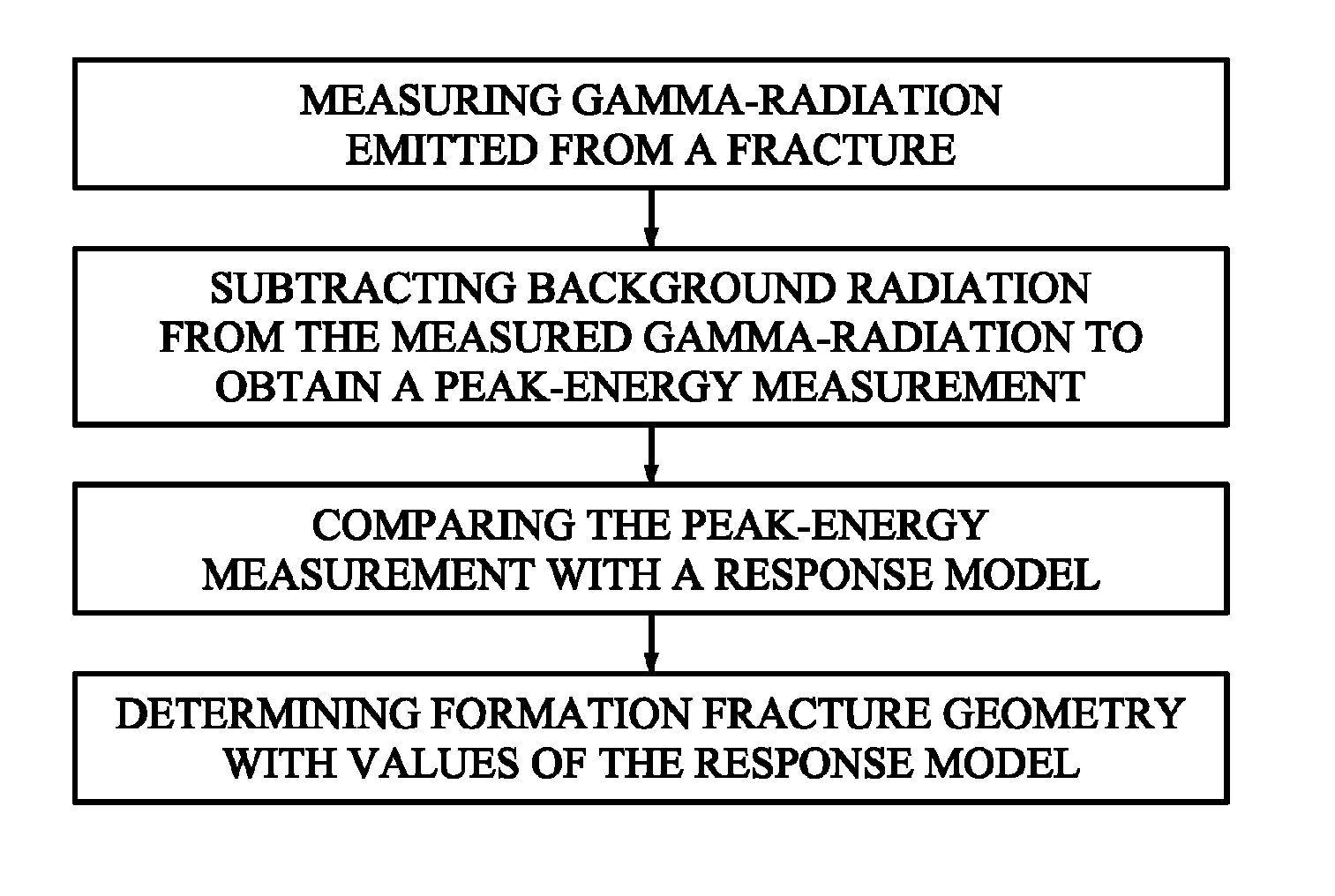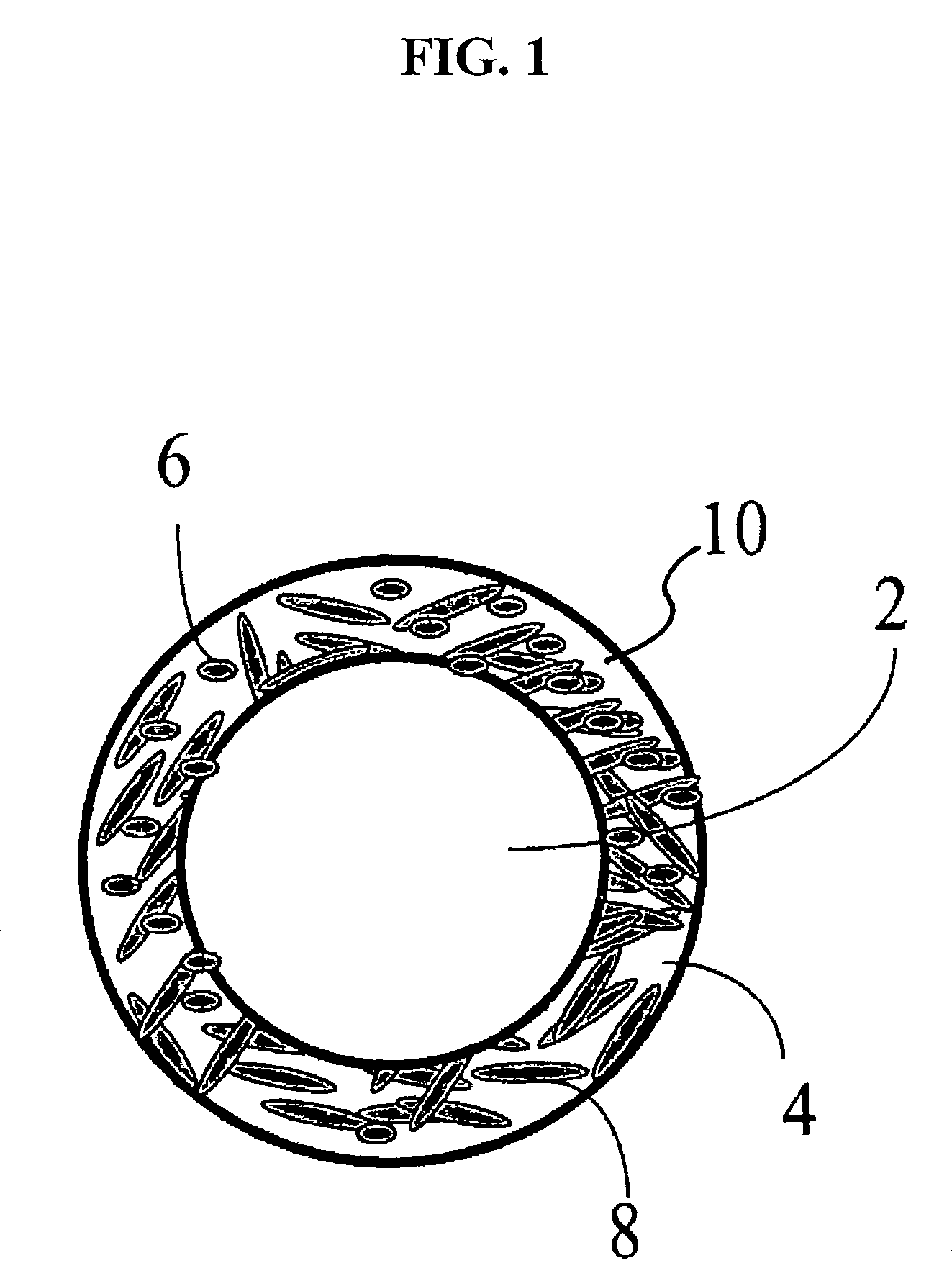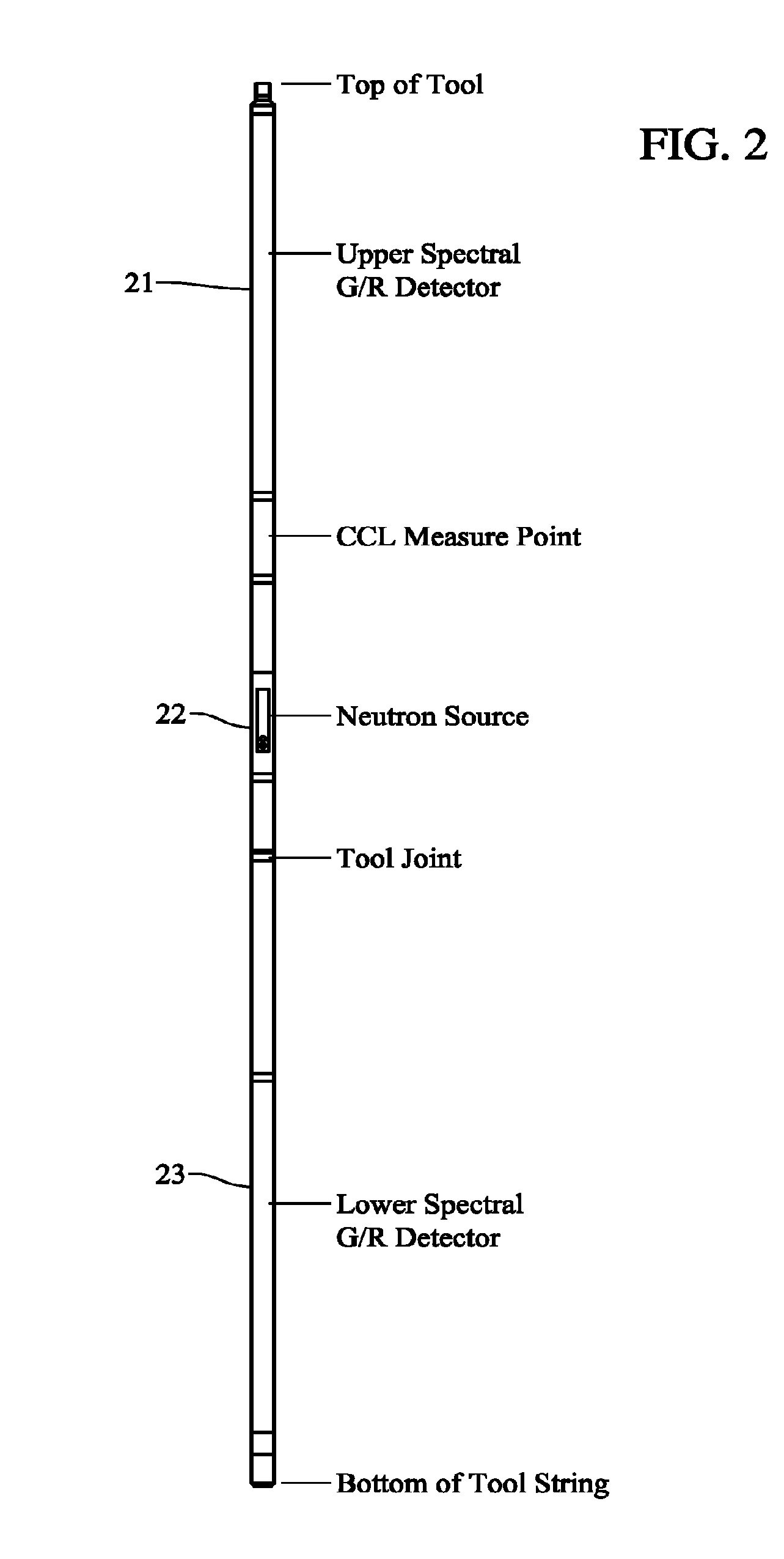Method and tool for determination of fracture geometry in subterranean formations based on in-situ neutron activation analysis
a technology of neutron activation analysis and fracture geometry, which is applied in the direction of survey, instruments, borehole/well accessories, etc., can solve the problems of adding operation costs, wasting materials used to maintain fractures after fluid pressure reduction, and expensive to efficiently operate wells
- Summary
- Abstract
- Description
- Claims
- Application Information
AI Technical Summary
Benefits of technology
Problems solved by technology
Method used
Image
Examples
Embodiment Construction
yzing measured neutron activation data from a well fracture in accordance with an embodiment of the present invention; and
[0020]FIG. 4 depicts a cross-sectional view of a three-dimensional input to a neutron transport calculation model in accordance with the method of the present invention.
[0021]FIG. 5 depicts a flow chart scheme of one embodiment of a method of determining fracture geometry of a subterranean formation from radiation emitted from a fracture in said formation.
[0022]FIG. 6 depicts a flow chart scheme of one embodiment of a method for modeling geometrical parameters of a subterranean formation fracture detected by collecting gamma-radiation data stimulated by a neutron source.
DETAILED DESCRIPTION OF THE INVENTION
[0023]In accordance with the present invention, a method for determining fracture geometry uses environmentally friendly materials. These environmentally friendly materials are nonradioactive until bombarded by neutrons and will be referred to as radiation susc...
PUM
 Login to View More
Login to View More Abstract
Description
Claims
Application Information
 Login to View More
Login to View More - R&D
- Intellectual Property
- Life Sciences
- Materials
- Tech Scout
- Unparalleled Data Quality
- Higher Quality Content
- 60% Fewer Hallucinations
Browse by: Latest US Patents, China's latest patents, Technical Efficacy Thesaurus, Application Domain, Technology Topic, Popular Technical Reports.
© 2025 PatSnap. All rights reserved.Legal|Privacy policy|Modern Slavery Act Transparency Statement|Sitemap|About US| Contact US: help@patsnap.com



